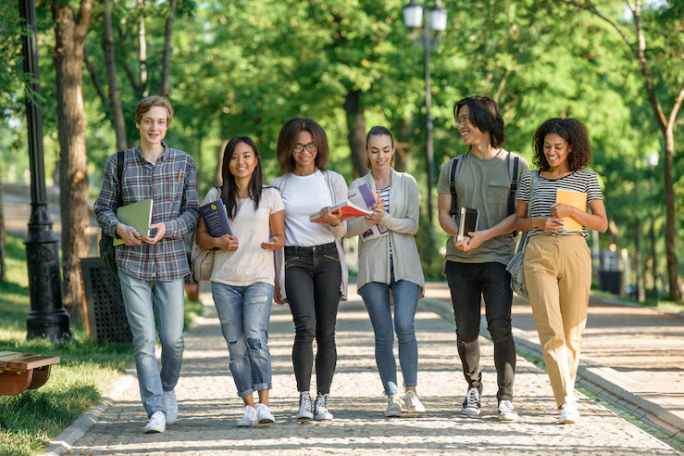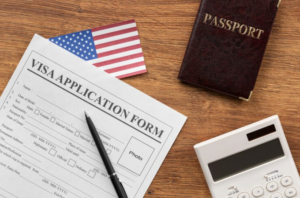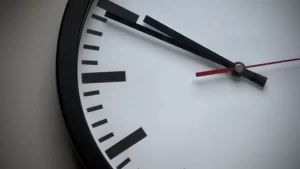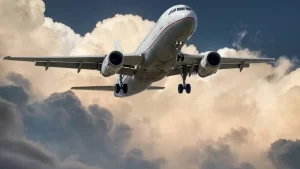Complete Guide to Student Visa Requirements and Process

For many international students, studying in the United States of America (USA) is their dream. It’s no wonder that students from all around the world seek an education visa to achieve their educational goals with world-class universities, modern research facilities, and varied cultural experiences. Still, understanding the student visa and negotiating the process can feel difficult. This article ensures that you can confidently approach your student visa application USA path through this step-by-step guide.
What is a Student Visa?
A student visa is an official document issued by a nation allowing international students to study at a recognized university inside its boundaries. The most often occurring forms of student visas in the USA are:
- F-1 Visa: For educational programs including English language and academic programs.
- M-1 Visa: For technical or vocational instruction.
- J-1 Visa: For government-sponsored or subsidized study included in exchange programs.
Although the F-1 Visa is the most often utilized visa for international students enrolled in American colleges and universities, for this guide we will mostly address it.
Step-by-Step Guide: How to Obtain a Student Visa for the USA
Step 1: Get Accepted by a SEVP-Approved School
You have to first get into an institution approved by the U.S. Student and Exchange Visitor Program (SEVP) before applying for a student visa.
- Research and apply to approved institutions.
- Once approved, the university will send you a Form I-20—which is necessary for your visa application.
Step 2: Pay the SEVIS Fee
Before submitting your visa application, you must pay the mandatory fee for the Student and Exchange Visitor Information System (SEVIS).
- Fees: For F-1 and M-1 visas $350.
- Payment: You must keep the receipt for your records even though you can pay online.
Step 3: Complete the DS-160 Form

The official form required for your student visa application is the DS-160 (Online Nonimmigrant Visa Application).
- Completely complete the form on the CEAC website.
- Upload a digital picture satisfying U.S. Department of State guidelines.
- For your records, note the DS-160 confirmation number.
Step 4: Schedule a Visa Interview
An in-person interview is a key part of the process for a USA student visa.
- To arrange an appointment, visit the website of your country’s U.S. Embassy or Consulate.
- Pay the around $160 visa application fee.
- Make sure you have all the necessary interview documentation.
Step 5: Gather Required Documents
You must prepare the following to satisfy the requirements for a student visa in the USA:
- Valid passport valid for at least six months after your visit.
- Form I-20 from the school your SEVP approved.
- DS-160 confirmation page
- Payment of SEVIS fees received.
- Financial documentation showing your ability to pay living expenses and tuition.
- Academic records including standardized test results.
- According to U.S. visa policies, passport-sized pictures.
Step 6: Attend the Visa Interview
An important phase of the interview is when you will respond to inquiries concerning your future intentions, financial position, and school schedule.
- Be active and honest.
- Emphasize your plans to go back home once your studies are over.
- Bring all necessary paperwork for verification.
Step 7: Wait for Visa Approval

The consular officer could approve or reject your visa application after the interview. If it is approved, your passport will be stamped with a visa and returned to you.
- Typically it varies, processing time usually takes a few weeks.
- Check your online application status.
Extending Your Stay: Maintaining Your F-1 Visa Status
Maintaining your F-1 student visa is vital once you have arrived in the United States. Violating the rules of your student visa may have dire results including deportation and visa cancellation. The important elements below help you to keep in obedience:
Full-Time Enrollment
You have to keep full-time enrollment at the university until your SEVP is approved. This usually indicates:
- 12 credit hours per semester for the undergraduate student.
- Graduate students are typically defined by the program (typically 9 credit hours or research work).
Academic Progress
- Make appropriate academic progress as per the institution’s standards.
- Your visa may be compromised by poor performance or falling short of the mandated credit hours without prior permission.
Employment Rules
F-1 visa holders are restricted in the kind of employment they are qualified for:
- On-campus employment allowed up to 20 hours a week during academic sessions and full-time during breaks.
- Off-campus employment calls a specific permission, either currural practical training (CPT) or Optional Practical Training (OPT). Before working anywhere off-campus, always ask your Designated School Official (DSO).
Re-entry and Travel

If you plan to travel outside of the United States during your study:
- Make sure your passport is valid for at least six months beyond your re-entry date.
- Have your DSO sign your Form I-20 for travel permission.
- Check visa requirements for your destination before leaving.
Key Tips for a Successful Student Visa Application
- Start Early: Start the application process a minimum of six to twelve months before your expected start date.
- Prepare Thoroughly: Get all of your paperwork ready, pay the required fees, and practice likely interview questions.
- Demonstrate Strong Ties: Establish that, once your studies are over, you intend to go back to your own country.
- Financial Proof: Verify whether your financial records either meet or above the necessary level for living expenses and tuition.
- Stay Organized: Keep all receipts, forms, and documentation copies in one folder to remain orderly.
Common Challenges and How to Overcome Them
Language Barriers
- If necessary, enroll in English language courses.
- Every day practice English writing and speaking.
Homesickness
- Video calls let you keep in touch with friends and relatives.
- Cook meals from home or honor cultural customs to create a familiar setting.
Academic Pressures
- Make use of university facilities including academic advisers and tutoring programmes.
- Use online resources or a planner to keep orderly in handling deadlines and assignments.
Typical Errors to Prevent
- Incomplete Forms: Verify that every part of the DS-160 form is completed.
- Inconsistent Information: Make sure your answers match up across all the paperwork and during the interview.
- Lack of Preparation: Practice possible interview questions and arrange your records in advance.
- Missing Deadlines: Strictly following the application schedule can help you to avoid delays.
Cultural Adjustment Tips for International Students
Living in a foreign country might provide difficulties. These pointers should enable you to adapt:
- Embrace Diversity: The USA is a melting pot of many civilizations, thus embrace diversity. To meet friends and create a support system, interact with students, join groups, and help with university events.
- Stay Informed: To help you prevent unintentional misunderstandings, learn about U.S. customs, regulations, and cultural standards.
- Take Care of Your Health: To maintain both mentally and physically fit, visit student health services, eat nutritious meals, and schedule frequent exercise.
- Manage Finances Wisely: Learn how to plan everyday costs, rent, and tuition. Save money using university resources and student discounts.
In Summary: Your Path to Academic Excellence

Getting a student visa for the USA can be a drawn-out yet worthwhile process. Following the advice in this article and keeping organized will help you to realize your dream of studying in the USA. Always rely on official sources and double-check the criteria for your nation’s U.S. Embassy or Consulate.
CTA: About Ready to Start Your Path?
To improve your chances of success and streamline the procedure, contact our experienced immigration professionals at Passage Law. Visit Passage Law to achieve your dreams.
